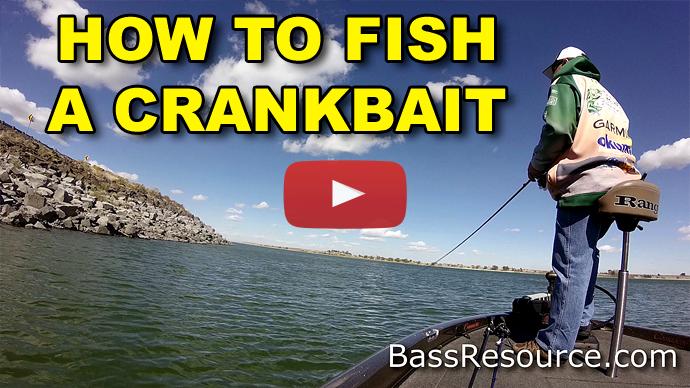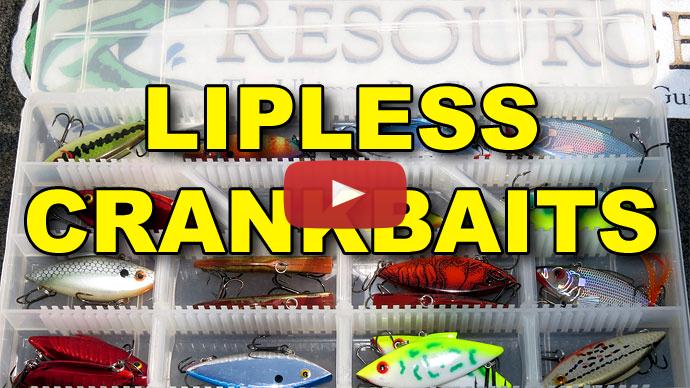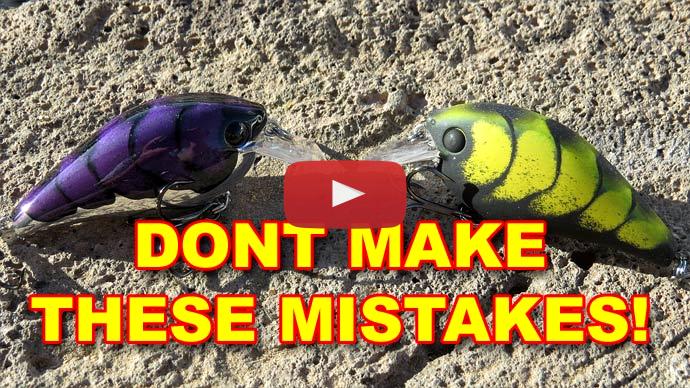Keri: I actually caught a fish and it's a largemouth, and it’s a largemouth, on the One Knocker. And look at that. He's got a face full of it, too. Come here, you. Come here, you. I do not want to get hooked. Stop it. I do not want to get hooked. Stop it. Got you. Right there. One knocker. What are you doing over here? All right. Let's let this beast go. A largemouth, I don't know what you're doing over here, but go play.
Glenn: Hey folks, Glenn May here at BassResource.com. And today I wanna talk to you about vibrating baits. So let's start off with the equipment, with the rod.
The rod here I have, specifically, it's a seven-foot crank bait rod. It's a medium power fast-action tip. So you can see it's got a lot of bend, a lot of flex to it, right? That is key. The reason you want that parabolic action is to have a lot to give when the fish bites. These hooks aren't huge. So there's not a lot of bite in those hooks. So the fish can leverage against it and actually pull rip the hooks free. But if that rod's got a lot of bend, a lot of give to it, then every time that fish makes a run for it, that rod gives and allows the hooks to stay in the fish's mouth. So that's really key. Plus, with a parabolic bend like that, you know, moderate action, it allows that rod to load up on the cast and you can fire that bait way out there, which is great when you're covering flats. You need to cover a lot of water, its large expanses of flats and weeds. That's what you want is to be able to get away out there.
Paired with it, I have…this is a Helios rod, I have a Helios reel from Okuma. I love this. The Helios Air has a 7:3:1 gear ratio, I believe. And you want a moderately fast reel. Because you do fish these really slow, you wanna have that flexibility. But when you're fishing really fast, you need a reel that can really crank it in really quickly when you wanna burn that bait back. So a reel that's got over a 7:1 gear ratio is what I like for crankbait fishing. Doesn't need to be a 9:1 or super high speed, but over 7:1 is what I like to have for fishing these baits.
And paired with that, I'm using fluorocarbon line. This is a Seaguar's Tatsu fluorocarbon line 12-pound test. There's a lot of reasons why I use fluorocarbon for this. Fluorocarbon, first of all, has a sensitivity I need to feel the bite because sometimes the bites aren't that strong. They're just nip it, they come from behind and keep swimming with you and you just feel a little bit different cadence in the vibration of the bait. So you need to feel that transmitting through the rod, through the line.
This rod has micro guides on it which are more sensitive than standard guides. But this line, 12-pound test, is about what I like to have because it allows this bait to get down to the depths pretty quickly. Fluorocarbon is dense so it does sink a little bit, lets the bait get down there. Monofilament has a big bend in it. It's more buoyant, has a big curve like this when you're pulling the bait back. There's a lot of extra line in there. You don't have as direct connection to the bait as you do with fluorocarbon.
I don't use braid for two reasons. Braid is buoyant. For the exact reason, it has that bend in it and won't let that bait get down as deep as I want to. But also braid, it's not that great in rocks. It will get frayed. It will get cut up. And you can end up breaking off and losing a bait. Fluorocarbon is more durable in rocks. And it's also very versatile in weeds and wood, and everything. So it's a real good all-around kind of line to use for fishing crankbaits. If I'm gonna throw a heavy cover, I might heavy up a little bit and go to 15 or 17-pound line. But typically, 12 pound is exactly what I want. That works really well for this.
Glenn: There we go. Oh, and he's a puller. Oh, he wants to fight. Come here you. All right, let's see if I can get him in without getting a hook to my face. I didn't bring the net. That's my problem.
Keri: You got him good. He ain't going nowhere.
Glenn: That's a good fish.
Keri: Look at that. One knocker.
So those are some of the different tricks. I hope those tips help. For more tips and tricks, visit BassResource.com.



